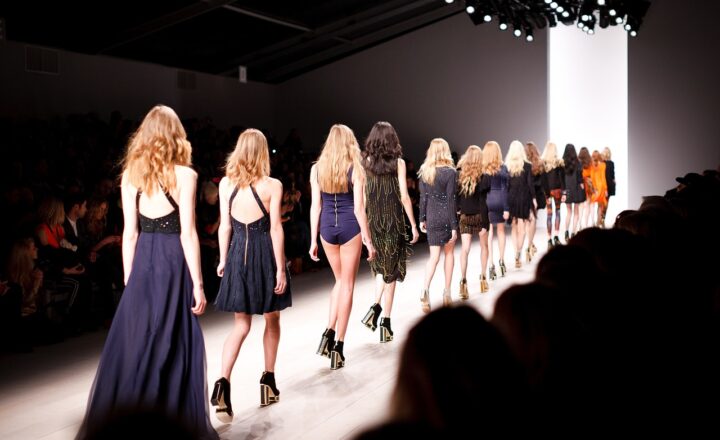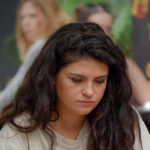Fabulous Fashion: Exploring the Timeless Styles of the 70s through the 2000s
November 19, 2024

Fashion is an ever-evolving artistic expression that transcends generations, and the styles from the 70s through the 2000s mark a significant evolution in how we define and interpret personal identity through clothing. This period not only reflects the socio-political movements of the times but also showcases how fashion cycles back, continuously inspiring new trends and ideas. In this article, we will delve into the iconic styles from each of these decades, examining their cultural significance, key elements, and how these styles remain relevant today.
1. The 1970s: A Kaleidoscope of Colors and Cultures
The 1970s were characterized by bold experimentation and a vibrant celebration of individuality. Economic shifts, the rise of counterculture, and a growing emphasis on self-expression gave birth to diverse styles that ranged from bohemian chic to disco glam.
- Bohemian Style: This style was all about flowing fabrics, ethnic patterns, and a free-spirited essence. Think maxi dresses, wide-brim hats, and layers of jewelry. Designers like Yves Saint Laurent popularized the look with pieces that drew on historical and global influences, making bohemian style a staple for those seeking a more laid-back aesthetic.
- Disco Fashion: The disco movement brought about metallic fabrics, tight-fitting clothes, and a whole new level of glam. Jumpsuits, platform shoes, and sequined dresses became synonymous with the disco scene, reflecting a celebratory ethos that captured the spirit of nightlife.
- Casual Wear: The popularity of denim surged in the 70s, leading to items like bell-bottom jeans and denim jackets becoming wardrobe essentials for both men and women. Casual wear emphasized comfort, allowing people to express their style effortlessly while adapting to their lifestyles.
The aesthetic of the 1970s not only challenged fashion norms but also opened doors for future trends by emphasizing diversity, inclusion, and the importance of personal style.
2. The 1980s: The Era of Excess and Bold Statements
When the 80s rolled in, fashion took on a loud and unapologetic demeanor characterized by vibrant colors and exaggerated silhouettes. This decade upped the ante with its approach to individuality, bringing an iconic style that often screamed for attention.
- Power Dressing: The concept of power dressing emerged, especially among women, as they began to occupy more roles in the workforce. Think oversized shoulder pads, tailored suits, and chic hairstyles that embodied confidence and authority in professional settings.
- Pop Culture Influences: The rise of pop icons like Madonna and Prince heavily influenced fashion. From lace gloves and layers of accessories to leather jackets and ripped jeans, styles were reflective of the rebellious spirit that defined the music scene of the time.
- Athletic Wear: The 80s also saw the advent of athletic wear becoming fashionable outside of gyms. Brands like Nike and Adidas introduced bright colors, leg warmers, and tracksuits that made workout clothing a comfortable and stylish everyday option.
The 1980s were unabashedly bold, embodying a sense of empowerment and a desire to stand out. The decade taught future generations that fashion could be both fun and powerful.
3. The 1990s: The Rise of Individuality and Grunge
A shift towards simplicity and authenticity dominated the 1990s, allowing individuality to flourish. This decade is often remembered for the rise of subcultures and the fusion of various influences.
- Grunge Aesthetic: Born from the music scene, the grunge look was characterized by flannel shirts, distressed jeans, combat boots, and an overall scruffy vibe. Bands like Nirvana and Pearl Jam influenced this style, making it synonymous with youth rebellion against the polished mainstream culture that preceded it.
- Minimalism: On the flip side, minimalism emerged as a counter to the excess of the 80s. Simple silhouettes, neutral color palettes, and a focus on quality became essential elements of fashion for many. Designers like Calvin Klein and Jil Sander led this trend, focusing on cut and fabric rather than embellishment.
- Streetwear: The late 90s saw the rise of streetwear, blending casual and urban styles. Baggy jeans, oversized t-shirts, sneakers, and branded apparel became the uniform of the youth, clearly showcasing a melding of fashion and culture.
The 1990s taught us that fashion could be both a reflection of societal values and a platform for self-expression, with individuality taking center stage.
4. The 2000s: Eclecticism and Revival
As we transitioned into the new millennium, the 2000s marked an era filled with nostalgia and eclectic styles, where past trends were revived and blended with contemporary elements.
- Y2K Fashion: This era is characterized by bold patterns, metallic fabrics, cargo pants, and crop tops. The fascination with technology and futuristic concepts influenced the aesthetic widely represented by pop stars such as Britney Spears and Christina Aguilera.
- Hip-Hop Influence: The influence of hip-hop culture became more pronounced, with oversized silhouettes, baggy jeans, and athletic sneakers defining the style of the youth. Brands like FUBU and Rocawear played crucial roles in popularizing this trend, making it mainstream.
- Retro Revival: The 2000s also saw the revival of styles from previous decades. Vintage shopping became increasingly popular, and pieces from the 80s and 90s made a strong comeback, reflecting a cycle of fashion that continually looks back for inspiration.
In the 2000s, fashion became a kaleidoscope of influences, showcasing how childhood nostalgia can entwine with modern style sensibilities.
5. The Legacy of Fashion from the 70s to 2000s
The styles from the 70s through the 2000s continue to influence fashion today. Contemporary designers often reference these iconic decades, seeking to inspire and evoke a sense of nostalgia amongst consumers.
Fashion designers and brands have begun to revive and reinterpret past styles for modern audiences, emphasizing sustainability and individuality. With platforms like social media, trends can resurface quickly, leading to a renaissance of styles long thought to be out of fashion.
As we look back on the fabulous fashion of these decades, it is clear that each era contributed to the conversation of style in unique ways, shaping how we express ourselves through clothing today. Whether it is through the bohemian influences of the 70s, the power dressing of the 80s, the individuality of the 90s, or the eclecticism of the 2000s, these styles remind us that fashion is not just about clothing but an impactful expression of who we are.
Conclusion
The timeline from the 70s to the 2000s showcases an impressive array of styles that reflect the cultural shifts of each decade. Whether you find yourself inspired by the colors and cultures of the 70s, the excess of the 80s, the individuality of the 90s, or the eclecticism of the 2000s, remember that fashion is a fluid dialogue that continues to evolve and inspire. Embrace the past and let it influence your personal style, creating a wardrobe that celebrates both history and individuality.






